When America Went Dry 100 Years Ago
The first step is to admit you have a problem. And America, you have a problem. Each year, alcohol abuse costs us $249 billion in lowered productivity, higher healthcare costs, added law enforcement expenses, and motor vehicle accidents. Every year, thanks to booze, 88,000 of us die. And we drink more every year, as the rates of associated liver disease and cancers, as well as fetal alcohol syndrome, increase as well.
Our drinking problem has been with us for as long as we’ve been a nation. Various solutions have been attempted, the most famous being Prohibition, which went into effect a century ago and failed spectacularly.
Alcohol wasn’t always a problem. In colonial times, it was considered a friend that dulled pain, brightened spirits, fought fatigue, and soothed indigestion. It was a medicine with many benefits, and often safer to drink than water. Even the Puritans, for all their disapproval of self-indulgence, didn’t outlaw liquor — there was more beer than drinking water on the Mayflower. In a sermon, Puritan minister Increase Mather referred to alcohol as “a good creature of God,” though drunkards were “from the Devil.”
Drunkenness wasn’t considered a social problem in those days. When people drank to excess, the community dealt directly with them. Drunkards were placed in stocks in the center of town for public humiliation, fined, or whipped. Robert Coles of the Massachusetts colony, who was known for his drunkenness, was made to wear a “D” of red cloth on a white background for an entire year “for abuseing himself shamefully with drinke.”
But as alcohol became more plentiful in the New World, so did its abuse. Within 20 years of the first Kentucky whiskey being distilled, over 2,000 distillers were annually producing over two million gallons of the spirit. Such a large supply drove down its price, so whiskey was not only abundant, but cheap.
One of the first to warn us about the dangers of alcohol was Dr. Benjamin Rush, former surgeon general of the Continental Army and signer of the Declaration of Independence. In 1784, he spoke out against this national pastime, declaring that liquor led men to “immodest actions … roaring, imitating the noises of brute animals, jumping, tearing off clothes, dancing naked, breaking glasses and china,” he wrote. Worse, it robbed men — women had limited access to liquor then — of the power of self-government, a necessity for citizens in a democracy.
His warning was almost totally disregarded. Alcohol was commonly given to women in labor, put in babies’ bottles, and served in business offices. Kegs of liquor were left open for anyone to help themselves to in stores and on steamboats. It was served to judges and juries during trials and considered a legitimate court expense. By 1830, Americans were drinking an astounding 7 gallons of pure ethanol per year per capita, the equivalent of 1.7 bottles of 80-proof whiskey per week for every adult, including the abstainers.
Robert Coles of the Massachusetts colony was made to wear a “D” of red cloth on a white background for an entire year “for abuseing himself shamefully with drinke.”
As the nation grew and the population became more mobile, communities lost their ability to regulate intoxication on their own. Heavy drinking could be observed anywhere, even in church. Renowned Presbyterian minister Lyman Beecher declared that liquor led Americans to become immoral and self-indulgent. “Drunkards reel through the streets,” he said, “day after day, and year after year, with entire impunity. … We are becoming another people.”
In 1826, to halt this moral corrosion, Beecher founded the American Temperance Society. Its cause was quickly embraced by many Americans who shared Beecher’s alarm. Within 10 years, the Society had convinced over 1.5 million Americans to never touch another drop of liquor.
“The temperance movement was a faith-based initiative that demonized drinking,” says historian Garrett Peck, author of The Prohibition Hangover. “It assumed there was no safe level at which anyone could drink any alcohol at all. Start drinking and you were on the road to being a drunkard.”
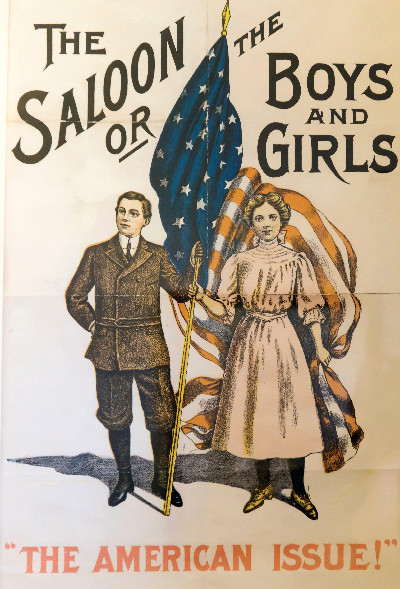
By the 1850s, the Temperance Society had built up enough support that 13 states passed some form of prohibitory law. Most of these states gave local authorities the right to dictate how liquor would be sold and consumed. New York, New Hampshire, and Delaware had statewide bans on the sale of alcohol. Maine and Tennessee prohibited manufacture and sale.
None, however, made drinking a crime.
The cause of temperance was buoyed by the Second Great Awakening, a Protestant revival movement that aimed to perfect society. Abolishing liquor was one of several reforms being pursued; abolishing slavery was another.
In the wake of the emancipation of slaves after the Civil War, temperance activists felt newly empowered. In 1869, they invited advocates of public education, government reform, open immigration, and expanded voting rights to Chicago. There, they formed the National Prohibition Party, focusing on alcohol’s role in causing chronic illness, joblessness, spouse abuse, child abuse, and poverty.
In Cincinnati, women prayed nonstop at a bar for two weeks, and even rigged up a locomotive headlamp to illuminate the drinkers skulking beyond the swinging doors.
One of the Party’s first acts was to accept women delegates. It was an acknowledgment that women, who could not vote, were often the most abused victims of men’s alcoholism. Wives and daughters could only watch helplessly as their fathers’ and husbands’ drunkenness brought brutality to their homes and poverty to their lives.
Women began targeting the drinking establishments that had taken their families’ money and futures. Their prayer vigils became a common sight outside taverns. In Cincinnati, women prayed nonstop at a bar for two weeks, and even rigged up a locomotive headlamp to illuminate the drinkers skulking beyond the swinging doors.
Through these protests, women discovered a powerful sense of unity, and in 1873 they formed the Women’s Christian Temperance Union, which, says Peck, went national with “600,000 members and was very influential. It became part of the progressive movement that sought to use the laws of the land to make Americans better people.” They promoted reformed labor laws and prison conditions as well as women’s suffrage. They protected young girls by lobbying to raise the legal age of consent to 15 (it had previously been 10 years old in some states).
But more radical prohibitionists were not satisfied with these scattershot reforms and, in 1893, formed the Anti-Saloon League. Saloons were a more promising target than alcohol — they were widely believed to be the source of the country’s drinking problem. Many were crime-infested dives, neighborhood centers for gambling, prostitution, and criminal gangs.
The League drew its support from rural voters. Wayne Wheeler, director of the League, regarded cities as un-American and lawless, often quoting a common sentiment: “God made the country, but man made the town.” He appealed to Americans in farm communities who feared the rising power of the cities. Daniel Okrent, author of Last Call: The Rise and Fall of Prohibition, says, “Nativists born in the vast middle of America thought they were losing their country. And Baptists and Methodist preachers, who were losing political influence, became the vanguard of the Prohibition movement.”
The Anti-Saloon League presented the alcohol problem as a black-and-white issue and, as Gerald Carson writes in The Social History of Bourbon, their messaging “did not always stick to the truth. Every man who took a drink was an inebriate. His children, if any, could only be mental defectives. Any homicide was a ‘Whiskey Murder.’ If a misguided youth out on the town took a swing at a police officer, it appeared in the papers as ‘Whiskey Reign of Terror.’”
For its first 15 years, the League focused on passing laws to regain local control over the manufacture and sale of liquor. As its successes grew, it gathered the support of powerful men like John D. Rockefeller. In time, Wheeler became so influential that he would be called on to advise presidents on temperance policy and to help pick candidates for crucial government jobs.
In 1914, the Anti-Saloon League proposed a national Prohibition amendment to the U.S. Constitution. “The Wets [anti-prohibitionists] never believed that it would happen,” says Okrent. “People said, ‘how can you amend the Constitution to say I can never have a glass of beer? That’s never going to happen.’”
But the amendment had strong support from Americans convinced that alcohol was bad for family life and American culture at large, says Okrent: “a group that wants to change the law has much more energy and passion than a group that wants to keep laws as they are. They are incredibly motivated.”
And when America was swept up into World War I in 1917, the Anti-Saloon League played on Americans’ xenophobia. It convinced the Justice Department that a number of breweries were owned in part by alien enemies. Wisconsin’s lieutenant governor advocated shutting down breweries, declaring, “We have German enemies in this country … the most treacherous, the most menacing, are Pabst, Schlitz, Blatz, and Miller.”
It wasn’t much of a leap for anti-immigrant forces to embrace the Prohibition amendment. “Since the early 1900s, immigrants had gained political power in the cities,” says Okrent. “The power of the cities was often
derived from saloon owners. Irish, Italian, and some Jewish saloon owners got heavily involved in politics.” Nativists believed that closing the saloons would break the political power of new voters, discourage aliens from coming to the U.S., and might even convince some immigrants to “go home.”
The 18th Amendment, prohibiting the sale of alcohol, was ratified in January 1919, and the Volstead Act, which authorized the enforcement of Prohibition, became law on January 17, 1920.
Even before it went into effect, Samuel G. Blythe was reporting on Prohibition’s early successes for The Saturday Evening Post. In Los Angeles, where Prohibition was already in force, a barber told him that he had more money to spend on the family and the house since he’d stopped drinking. He’d repainted his home, wallpapered some rooms, and bought a piano for his daughters. And he’d wiped out all his debts.
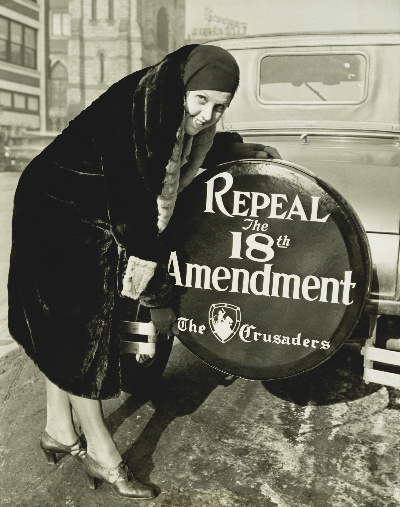
The manager of a big hotel told him that Prohibition had originally cut into his revenues, but they had returned to their old level. Also, there was better discipline in his employees and better behavior among his guests. Other hotel owners found income from their ballrooms and restaurants increasing. Newspaper circulation numbers had gone up. One saloon had been successfully converted into an ice cream parlor.
There were plenty of other optimists. Economists predicted Prohibition would bring prosperity through higher productivity and less absenteeism among workers. Some religious leaders anticipated nothing less than a moral revolution in the country. The histrionic evangelist Billy Sunday said, “The slums will soon be only a memory. We will turn our prisons into factories and jails into storehouses. … Hell will be forever for rent.” Some towns were so confident of the coming redemption of their citizens that they sold their jails.
These good reports led many to think that Blythe had been right when he wrote, “we’ll get used to Prohibition just as we have got used to many other reforms — not like it, but accept it.”
But America didn’t accept it. Prohibition didn’t bring prosperity. The entertainment industry went into decline. Restaurants failed when deprived of alcohol sales. States lost the crucial revenue they gained from their liquor taxes. Prohibition wiped out 75 percent of New York State’s revenue.
There was no rebirth of public morals, either. Crime in 30 major cities jumped 24 percent in the first year, and the murder rate shot up 78 percent. Between 1925 and 1930, violations of the Volstead Act rose 1,000 percent. The homicide rate during the Prohibition years rose from 6 to 10 per 100,000 Americans.
Organized crime grew into a national industry. Hastily hired, untrained revenue agents were frequently bribed by bootleggers. Chicago mobster Al Capone raked in 60-100 million untaxed dollars a year — more than $1 trillion in today’s money. The police chief of Boise, Idaho, said, “Drinking is done almost everywhere by almost everybody,” and a Topeka, Kansas, police chief said, “the girls simply won’t go out with the boys who haven’t got flasks to offer.”
Federal efforts at enforcement were chronically underfunded. Most states couldn’t afford to offer significant help to federal agents. New York refused outright to provide assistance.
“People said, ‘How can you amend the Constitution to say I can never have a glass of beer? That’s never going to happen.’”
Americans became convinced that “the government’s ability to legislate morality just doesn’t work,” says Okrent. “If people want something that doesn’t have an immediate victim, they will find a way to get it, irrespective of the law.” In December 1933, Prohibition was repealed.
Not everyone was ready to give up on temperance. Although gradually temperance groups faded from view, to this day almost 20 percent of Americans still believe Prohibition is a good idea, according to a 2014 CNN/ORC International poll.
The Prohibition Party still exists, and members like James Hedges are keeping the temperance flame burning. “We put our efforts more into educational work than political work,” he says. The NIAAA — the National Institute on Alcohol Abuse and Alcoholism, a division of the National Institutes of Health — sponsors and promotes evidence-based research on the medical consequences of alcohol.
The American Council on Addiction and Alcohol Problems claims to be the successor to the American Temperance Union and Anti-Saloon League. In addition to offering education on alcohol and drug abuse, the ACAAP campaigns to reduce liquor advertising, require complete content listings on liquor labels, and reduce the legal level of blood alcohol for drivers from .08 percent to .04 percent — the equivalent of about two drinks for the average-sized man.
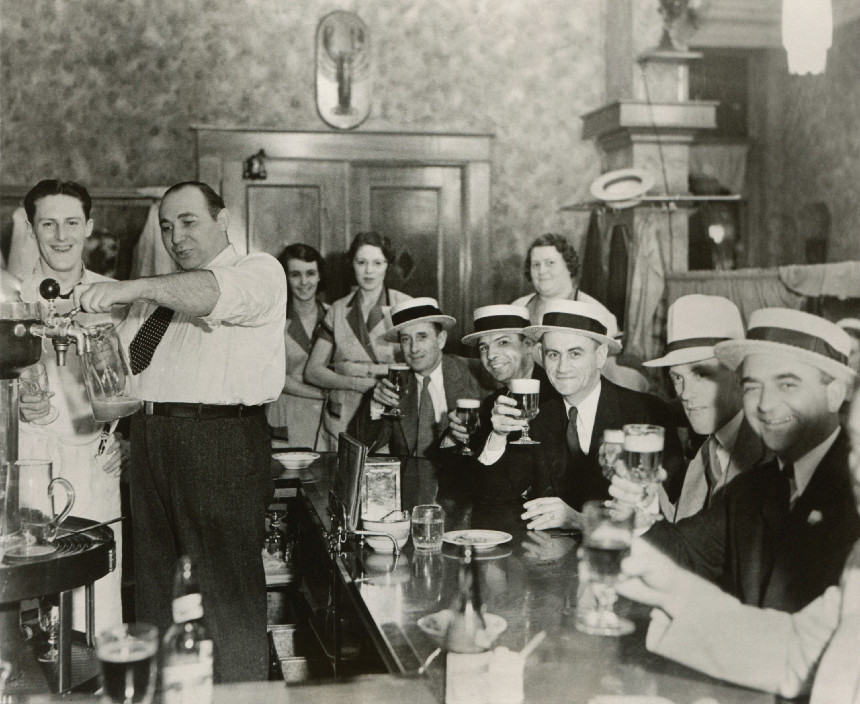
The Women’s Christian Temperance Union is still alive and working to convince Americans not to buy, sell, drink, or serve alcoholic beverages. It also reaches out to elected officials, corporations, and media leaders to inform them of the NIAAA’s findings on the health consequences of alcohol.
Prohibition may have proved that the government can’t legislate morality, and it may have wasted millions trying. But the problem Prohibition hoped to solve is not only still with us, it’s worse than ever, as NIAAA Director George Koob said in January when he called for “a wake-up call to the growing threat alcohol poses to public health. Alcohol-related deaths involving injuries, overdoses, and chronic diseases are increasing across a wide swath of the population.”
In this presidential election year, America seems more divided than ever. But the scourge of what Koob calls “a hidden addiction that nobody wants to talk about” afflicts progressives as well as conservatives, President Trump’s base voters as well as Joe Biden’s. The scourge might be generally hidden in the media, but it’s not hidden from its millions of victims and probably not from anyone reading this article. One hundred years after Prohibition, a noble but failed experiment, it’s time for Americans to start talking.
This is article appeared in the July/August 2020 issue of The Saturday Evening Post. Subscribe to the magazine to read the entire article.
Featured image: Who’ll stop the drain? Local police in Scranton, Pennsylvania, empty barrels of illegal booze seized from a train during the Prohibition era. (Arthur Miller / Alamy Stock Photo)
Cheers to the Volstead Act: 6 Cocktails to Celebrate 100 Years
On October 28, 1919, the Volstead Act overcame a presidential veto by Woodrow Wilson to become law. For those of you who are not up to date on your alcoholic history, the Volstead Act gave the 18th Amendment teeth, providing the federal government with the mechanisms it needed to enforce Prohibition.
But the gears of government turn slowly, so Prohibition did not fully go into effect until January 17, 1920. We here at The Saturday Evening Post choose to mark this dark — though certainly not dry — occasion with a cheers to 100 years. Won’t you join us with one of these six Prohibition-era cocktails? Lock the door, draw the blinds, keep an eye out for Johnny-Law, and always drink responsibly.
The Martini
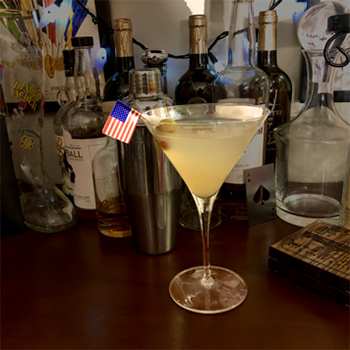
A staple in any barfly’s repertoire, H.L. Mencken referred to the martini as “the only American invention as perfect as the sonnet.” The martini has been around since the 19th century, but took hold in America during Prohibition, so it’s the natural start for our recipe list. The martini’s popularity is rooted in its taste, as much as in its simplicity.
- 3 ounces gin or vodka
- ½ ounce of dry vermouth (or to taste)
- ½ ounce of olive brine (or to taste)
- An olive (for garnish)
Mix the first three ingredients in a shaker with ice, pour into a chilled Martini glass, and garnish with an olive.
I chose to make mine with vodka. On the classic show, M*A*S*H, Trapper John famously requested his martini as “a veritable dust bowl, a drink that is dying of thirst.” I also prefer my martinis “dry,” so I cut back on the vermouth. But I also like my drink to not only be “dirty,” but rather absolutely filthy, so I pour the olive brine with a heavy hand.
Gin Fizz
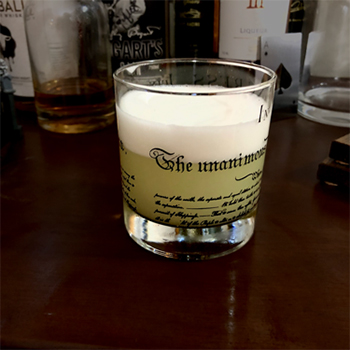
The gin fizz is a Prohibition-era drink that has unfortunately fallen out of fashion. Whether it’s the cholesterol in the egg — or the salmonella — the modern drinker rarely orders this cocktail anymore, but that’s to their detriment.
- 2 ounces of gin
- 1 ounce of lemon juice
- 1 egg white
- 1 ounce of simple syrup
- 1 ounce of club soda
Mix the first four ingredients in a shaker without ice for about 15 seconds, then add a few cubes of ice, and shake even more. Pour these into a glass, through a filter, then add the club soda, and enjoy.
This drink is amazingly smooth and delicious. It’s a lemon square with gin it, and can best be enjoyed while watching a sport you can’t afford to bet on. I recommend polo.
Whiskey
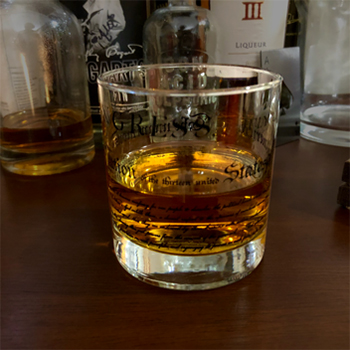
Whiskey.
- Whiskey
- Ice (optional)
Old Fashioned
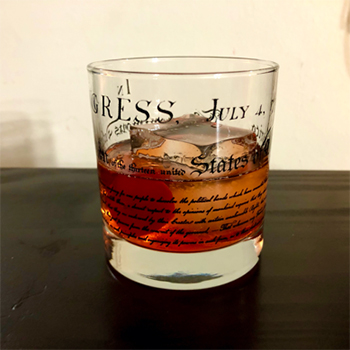
Yet another bar staple, the old fashioned has endured like the martini for similar reasons, its simplicity. While primarily bourbon, a good old fashioned uses its sweeter elements to mask the more unpleasant tastes. This would have been crucial during Prohibition, as quality alcohol was hard to come by, and drinkers were forced to rely on bootleg spirits that were severely lacking in quality.
- 2 ounces of bourbon
- 2 teaspoons of simple syrup
- A dash of bitters
- 1 maraschino cherry
- A lemon or orange peel (garnish)
- 1 large ice cube
Pour the ingredients into a glass, stir with a spoon, add the ice cube and the peel, and enjoy.
An Old fashioned is an incredibly tasty addition to any night on the town, but be careful, the sweet parts of the drink mask how strong they really are, and all that sugar can lead to a rough morning.
French 75
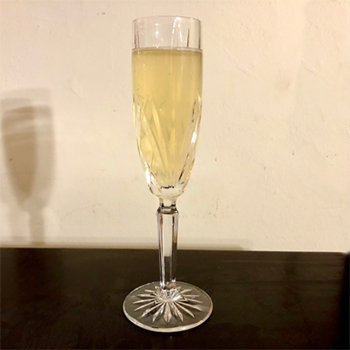
If you were lucky enough to come across champagne during Prohibition, you’d want to do everything in your power to make it last. That certainly contributed to the popularity of this refreshing drink in the 1920s. Named for a French artillery cannon, like its namesake the French 75 carries quite a punch.
- ½ ounce of simple syrup
- ½ ounce of fresh lemon juice
- 1 ounce of gin
- 3 ounces of champagne
Pour the ingredients in a champagne flute and enjoy. No complicated shaking or mixing; it’s as easy as that.
It’s understandable why this drink isn’t as popular as it once was. Champagne is expensive, and if you’re in the mood for it, there’s not much of a reason to add gin. That said, this is a great drink for celebrations, when the 12 percent of alcohol in champagne just won’t cut it. I’d recommend it for a wedding you don’t necessarily approve of. You’re not going to object when they say, “speak now or forever hold your peace,” but you’re certainly not going to stay sober for the occasion.
Tom Collins
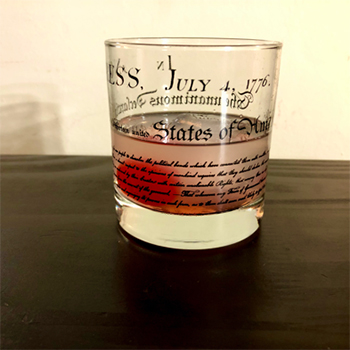
Another American creation, the Tom Collins, relies on all the trappings of Prohibition-era cocktails. Using citrus and sugar to mask the taste of the underlying gin, the Tom Collins stands out as an essential drink of the time.
- 2 ounces of gin
- 1 ounce of lemon juice
- ½ ounce of simple syrup
- 3 ounces of club soda
- Ice
- Maraschino cherry for garnish
- Lemon peel for garnish
Mix the gin, lemon juice, simple syrup, and ice in a glass. Once the drink is fully mixed and chilled, add the club soda and garnishes.
It would feel silly to order a Tom Collins anywhere outside of a country club these days, but it’s easy to see why the drink was so popular. It’s tasty. The cherry and simple syrup cover the taste of the gin almost entirely, and the club soda gives the drink a light, refreshing kick. While our gin may have improved (it’s nice to not have to worry about going blind from drinking anymore), the practice of masking the impurities led to the creation of a perfect summer drink.
Featured image: Shutterstock. Photos by Tim Durham.
Would the Government Deliberately Poison 10,000 Prohibition Violators?
Prohibition was failing.
Six years after the 18th amendment went into effect, not only were Americans still drinking, they were drinking more every year. The annual per capita liquor consumption had risen from .02 to 1.2 gallons of alcohol.
Most of this bootleg liquor wasn’t coming from smugglers or from home-made stills. America’s chief source of illegal liquor was legal liquor.
Several distilleries still produced industrial alcohol for manufacturers. But before shipping this pure alcohol, the Treasury Department required the distillers to add materials that would render it undrinkable. The list included kerosene and gasoline, as well as iodine, mercury, formaldehyde, and chloroform. But the most common ingredient was highly toxic methyl alcohol, also called “wood alcohol.”
Wood alcohol has no color or distinctive odor, and it tastes like drinking alcohol. But when ingested it breaks down into a form of formaldehyde. Drinkers don’t notice the difference at first. Wood alcohol produces a short-lived inebriation quickly followed by a hangover. If lucky, the drinker might experience only a headache, nausea, and severe abdominal pain. If unlucky, the drinker could be blinded (this took only three drinks of wood alcohol), paralyzed, or killed.
Bootleggers got around this problem by hiring chemists to re-distill industrial liquor, which removed the adulterating chemical. This “re-natured” alcohol wasn’t always 100 percent free of toxins. Bootleggers were only interested in rendering a drinkable product that wasn’t immediately lethal. For example, of 480,000 gallons of bootleg liquor seized in New York in 1926, 98 percent contained poisonous additives.
Fortunately, bootleggers usually diluted their liquor heavily, which reduced the danger.
Despite the interventions from bootleggers, Americans continued to die from wood alcohol poisoning. In 1926, for example, a batch of liquor with a high concentration of wood alcohol circulated in New York. On Christmas Eve, Bellevue Hospital treated a rush of poisoning victims, beginning with the man who, trembling with fear, staggered into the emergency room claiming that Santa Claus was chasing him with a baseball bat. He soon died. Sixty more victims followed on Christmas day. Eight died. Over the next two days, there were 23 more fatalities.
Americans knew that any time they drank liquor of an unknown provenance, they were gambling with their lives. Yet they continued to drink.
By 1927, the Treasury Department had grown frustrated. So had the Anti-Saloon League, the powerful lobbying group that had spearheaded the 18th amendment. At their urging, the Treasury Department decided to get even tougher. It ordered industrial distillers to boost the percentage of wood alcohol, which would make purifying it to drinkable even harder. The government reasoned that once Americans heard about the poisonous new formula, they’d avoid all alcohol.
The year before the Treasury ordered higher levels of wood alcohol, 400 people died from adulterated alcohol. The next year, 1927, the annual figure rose to 700.
By the end of prohibition in 1933, 10,000 people had been killed by poisoned alcohol, according to the book Prohibition by Edward Behr.
This number is cited by nearly every source on the subject, though no one seems to know how the number was derived. But given the death toll of 1927, the body count must have at least been in the thousands.
Americans were angry to learn of the poisonings. What had begun as a moral crusade to strengthen the country had turned into a vindictive campaign willing to kill Americans for a crime that would usually involve just a fine. As columnist Heywood Broun put it, “the eighteenth is the only amendment with a death penalty.”
So were the poisonings intentional? Did the government increase the poison in ethanol knowing that it would result in even greater deaths? It’s difficult to determine the intention of long-ago actions. But we have some revealing comments from Treasury officials of that time.
For example, when a wood-alcohol-related death in 1928 prompted a public outcry, a Federal Grand Jury concluded that the federal government bore no responsibility. “Wood alcohol is not a beverage, but a recognized poison,” it decided. Its sale and use were a matter for state authorities.
Theassistant secretary of the Treasury in charge of prohibition said that drinkers on the fringes of society were “dying off fast from poison ‘hooch’.” If the result of these deaths was a sober America, he said, “a good job will have been done.”
The chief chemist for the prohibition unit said Americans couldn’t possibly taste denatured alcohol without realizing it was unfit for consumption. Yet in 1923, he admitted to Time magazine that “it is impossible to detect wood alcohol except by a thorough chemical analysis performed by a skilled chemist in a well-equipped laboratory.”
The poisonings soured many Americans on prohibition, and on the Anti-Saloon League. The League’s chairman, Wayne Wheeler, responded to news of the poisonings by saying “the government is under no obligation to furnish people with alcohol that is drinkable when the Constitution prohibits it. The person who drinks this industrial alcohol is a deliberate suicide.”
The Anti-Saloon League had anticipated the deaths and were not bothered by the idea. Not only had the League’s lobbyists urged the poisoning of industrial alcohol, they also lobbied to remove the “poison” warning on the containers. When challenged by the deaths, a League member said the deaths were insignificant compared to the numbers killed by legal liquor before prohibition.
In 1933, alcohol was made legal again. People stopped dying from poisoned liquor. Many returned to their old drinking habits, but at a lower level than before prohibition.
Alcohol-related deaths didn’t stop, though. Unadulterated alcohol is now the killer, claiming 88,000 lives every year.
Featured image: U.S. Army
What the 21st Amendment Can Teach Us about Legalizing Marijuana
After 48 years of being listed as a Schedule 1 controlled substance alongside drugs like heroin and LSD, marijuana may be shedding its sinister reputation. Ten states have decriminalized it for recreational use, and 23 additional states allow it for medical purposes.
Despite the growing legalization trend at the state level, Washington, D.C. has several big objections to legalizing marijuana at the federal level, including health and addiction concerns.
So what would it take for the government to overcome these objections and lift the national prohibition on marijuana? As a clue for what might happen in the future, consider how alcohol came to be decriminalized in the 1930s.
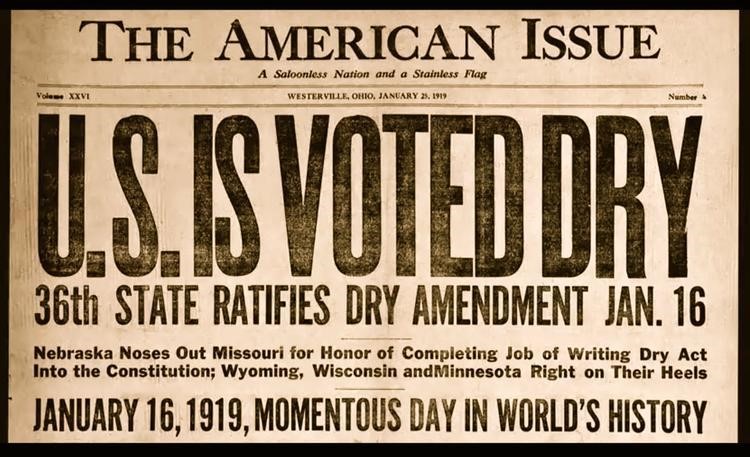
Prohibition advocates had high expectations when the 18th Amendment was ratified in January 1919. The Anti-Saloon League led the drive for prohibition, believing that a dry America would be more honest, prosperous, and harder working. They saw alcohol as a menace that had destroyed families and kept some urban Americans in perennial poverty. Saloons were widely regarded as incubators for trade union organizers and communists, a gathering spot for unwanted immigrants, and the place where crooked politicians bought and sold votes.
In addition to the moral problems brought about by alcohol and saloons, Prohibitionists saw economic upsides to a dry country. One economist predicted it would make the U.S. more productive, raising national output by 10 to 20 percent. Restaurant and theater owners hoped that prohibition would increase public demand for dining out and entertainment, and the government supported prohibition to conserve grain for the troops fighting in World War I.
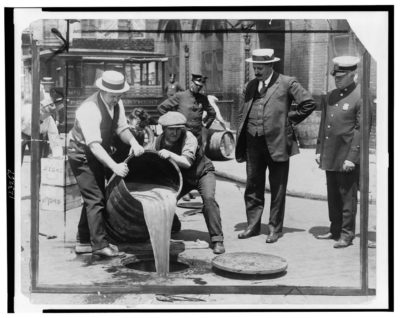
But by 1932, prohibition had lost much of its popular appeal. The saloons might have been closed, but they’d been replaced by speakeasies. New York alone had an estimated 60,000 of them. And bootleg liquor was now available at affordable prices.
Instead of making America more moral and law-abiding, Prohibition had created opportunities for organized crime to thrive and led to widespread corruption among law enforcement agencies.
Enforcement of the 18th Amendment, spelled out in the Volstead Act, had never been properly funded. The federal government depended heavily on state governments for enforcement, and states didn’t have the resources to pursue all the people involved in making and selling booze. Even non-drinking Americans were losing respect for law enforcement agencies that could not enforce the Volstead Act.
Restaurant and theater owners found that sober Americans were less interested in night life. Many restaurants failed, realizing too late that their liquor sales were the key to their profitability.
Finally, the war had ended in 1918, as had the need to conserve grains for the war effort.
The tide had turned against the 18th Amendment, but it might have remained on the books, even if widely disregarded. What brought about its repeal was the Great Depression. With unemployment hovering around 25%, Americans believed that starting up the distilleries and breweries would help create jobs.
And there was the tax revenue. Roosevelt’s many New Deal programs required lots of money. When prohibition ended alcohol excise taxes, individual income taxes were raised to make up the loss. With repeal, the Treasury Department would keep the income tax and bring back liquor excise tax.
It took the temperance movement nearly a century to achieve nationwide prohibition in America. But when Washington saw an answer to more jobs and more taxes, it took just 11 months to repeal the law.
We see a similar pattern today with cannabis. Repeal won’t be a matter of individual liberties, but of economics. Friends of marijuana are showing how pot will bring sizable tax revenue, with the potential for a million new jobs. The allure of happy, employed voters and full coffers might be too great for many politicians. As with alcohol 85 years ago, when legislators are convinced of the cost benefits of legal pot, they may be more likely to reconsider its place in American society.
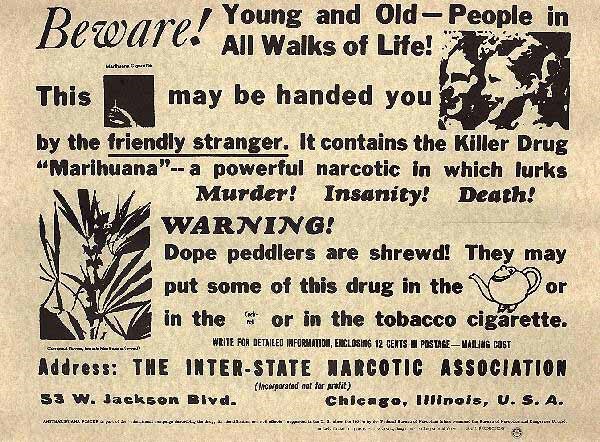
Featured image: Protest against Toronto’s prohibition laws, 1900